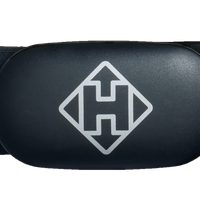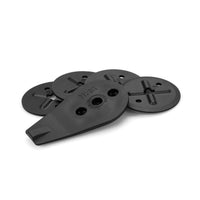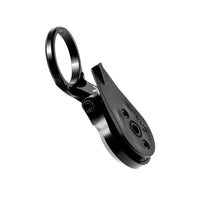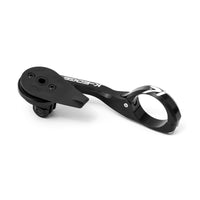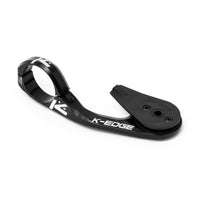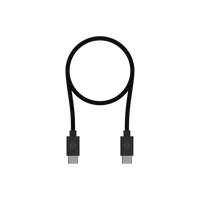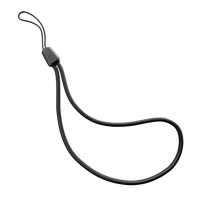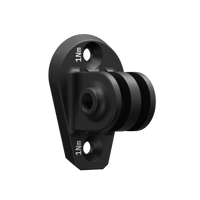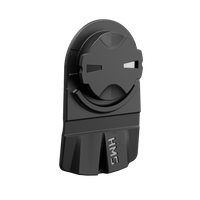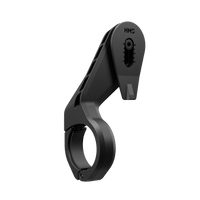Cold feet about bracket feet? Read on.
Hi Everyone,
As we mentioned last week, we wanted to provide an update for those facing breakages or fears of breakages in their Karoos’ bracket feet.

Foremost, we want to apologize for any stress or inconvenience these failures have caused. We understand that we sold Karoo, in part, on the merit of its durability, and that a failure of the design of this sort can reduce confidence in our product. For the lost rides, interrupted data, confusion, or uncertainty, we are sorry. We share the frustration of those who’ve bracket feet have broken, and are determined to rectify this for you.
A number of Karoo users (approximately 2.6%) have reported bracket feet breaking during riding, in conditions that range from rigorous, high-impact off-road situations to relatively slow and casual but bumpy road riding. While the number of variables that can contribute to bracket foot failures are many, rather than explore all of these in a slow and meticulous process that could take months, we’ve opted to design and manufacture a new bracket foot, and offer one free of charge to each Karoo customer. More details on this in a moment.
Below is a high-level summary of different components of the bracket foot issue — from testing to failure types — written by our head of hardware, Robert:
–––––––
As mentioned in a previous update, we’ve been working on a solution to the issue of the bracket foot breaking while out on a ride for some riders. We will walk through the two different failure modes we’ve observed, the solutions for each, and the next steps for our customers.
Failure Mode #1: Snapped mounting tabs

If a condition is created where the bracket foot tables aren’t uniformly receiving the the energy from bike impacts, then the concentration of that energy on a smaller area of the bracket tabs can cause a fracture. While we’ve received various reports of non-crash ride experiences that caused this fracture, the most reliable way to reproduce snapped tabs is to simulate a direct handlebar impact with the ground. This is when the bike has presumably crashed and Karoo (with the bike) is at 90° at the point of impact.

Solution
To mitigate this failure mode, we’ve increased the fillet radius on the sides of the tabs and changed the material. We can only do a slight increase in fillet radius due to the fundamental design limitations of using a quarter-turn locking solution, so we focused mainly on choosing a material with better performance. We tried several different plastics both with and without glass fiber reinforcement in our impact test jig. Since we used a glass fiber reinforced polycarbonate for our original bracket design, this was our control used against replacement material candidates. Our test results showed that using an unreinforced polycarbonate not only outperformed all of our other samples (including an industry-standard PA66 glass-filled nylon), but also had the added benefit of exhibiting signs of plastic deformation well before the point of fracture.
Failure Mode #2: Plastic tearout at bolt head (AKA: “donut hole failure”)

As discussed in Failure Mode #1, tab snapping occurs during eccentric loading of the bracket foot tabs. However, if the tabs do happen to uniformly receive the energy from a bike impact, that energy is then transferred through the bracket foot and to the bolt. When the impact energy is sufficiently high, the stress concentrated on the underside edge of the bolt’s clamping area can cause a fracture. The most reliable way to reproduce this failure mode is to simulate a flat, direct impact with no bracket arm at all.

Solution
To solve this issue, we’ve doubled the radius of the fillet at the corner where the donut meets the rest of the bracket foot. This greatly reduces stress concentration during impact and should prevent further mid-ride donut hole failures. We’ve also increased the wall thickness at the clamping point, and added larger fillets in other areas for good measure. This geometry change combined with the material change we made to prevent snapped tabs has effectively eliminated this failure mode from occurring. Our impact testing confirmed this and we’re confident in the result.
––––––––––––––––––
What happens now?
We have already initiated the production of new bracket feet based on this revised design. The new bracket feet will be sorted and prepared for shipment to customers within five weeks.
Currently, we are shipping (original design) replacement bracket feet on an as-needed basis, and will continue to do so until the new bracket feet are ready for distribution.
Within two weeks we will provide a simple and easy platform for anyone who so chooses to request of new bracket feet. This may come in the form of a dedicated email address for manual processing, an online form/survey-type interface for automatic processing, a combination of both, or a different system entirely. We are still determining the best mechanism to deploy here, but once we have this sorted, we will let our community know right away.
Until the new replacement bracket feet are distributed, we strongly recommend:
- Using the included Barfly bracket that was included with your Karoo, and not other, more rigid mounts, particularly those made of alloy.
- Installing the lanyard that was included with Karoo, to provide at least one additional layer of protection for your Karoo if the current bracket foot fails.
We again want to offer apologies for the inconvenience and frustration to those members of our community who have experienced any issues with their bracket feet. We deeply thank you for the support you’ve offered both Hammerhead and Karoo despite this setback, as well as for your engagement helping us to identify and address this.
Please keep an eye out for communications on the next steps for our community.
Thank you again.
Cheers,
<H>


